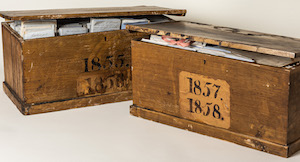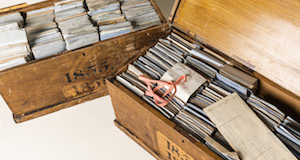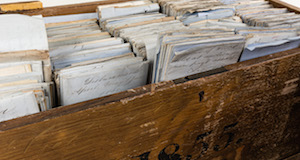In the Reading Room
I arrived at AAS thinking I would spend a precious month happily free from quotidian obligations, immersed in stellar archival material, taking notes and pictures, watching my program content map and scripting evolve as information and insights build up. I’d enjoy my fellow researchers, sometimes directly, sometimes just in our unspoken but energizing shared, parallel absorption in the reading room. All this happened, and it was great.
What I had not foreseen, and what added to the depth and richness of my time at AAS more than I could have imagined, was the constant support, validation, collaboration, new exposures and chances to expand my investigations that I received from many sources. In an initial orientation meeting, Nan Wolverton, Director of Fellowships and the Center for Historic American Visual Culture said, in effect, ‘don’t be surprised if you’ve come in looking for one thing and your time here leads you to change things!’ It was a great reminder to be less concerned about producing a ‘product’ at the end of four weeks and focus more on what I can find out and where it takes me. All during the month, Nan was a continuously validating presence in the reading room, regularly stopping by to ask how things were going, offering advice and guidance in response to any question or help I needed.
Within the first few days, like all Fellows, I gave a brief description of my project at a meeting with the Curatorial staff. During the weeks that followed, they became creative knowledge collaborators, bringing to my attention via conversation and/or materials, information and items in the collections I might find worthwhile to explore but might not know to look for. Especially helpful were Ashley Cataldo, Lauren Hewes, Elizabeth Pope, Kimberly Toney, Laura Wasowicz (the emergence of railroads in children’s literature morality tales and book illustrations), Kevin Wisniewski (Walt Whitman; railroad development), Nan Wolverton and Dan Boudreau. All staff on the desk were always incredibly helpful. A tutorial by Amy Tims on search techniques specific to AAS collections was invaluable. I had a fascinating time when one of the Curators, Ashley Cataldo, knowing of my interest in the railroads, invited me to join her as she opened a newly received large wooden box of railroad records for the first time.
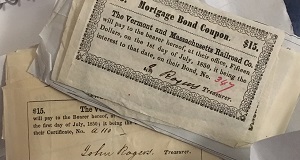
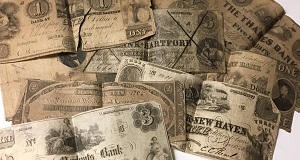
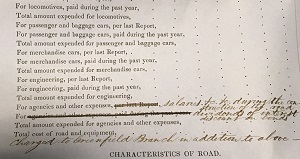
Click the images above to view details of the railroad records found in the box.
Rails brought a new timescape to America. With it came fast ways to spread counterfeit currency.
The month also brought unique settings for learning and exchanges: the AAS public programs and Curator programs; weekly gatherings where Fellows at the culmination of their residency presented their project progress to date to the other Fellows and AAS staff, who responded with comments and insights. These sessions, headed up by Distinguished Scholar in Residence Karen Sanchez-Eppler, were supportive, illuminating and fun. I came away from my presentation with suggestions for additional areas to explore and potentially include in my program, most notably: the foundational impact of the steam engine (Jim Moran), the railroad’s impact on the lives of people with disabilities (Don James McLaughlin), and Chinese immigrant participation in the vernacular and organized cross-cultural exposure and engagement in the arts (Rachel Miller).
Being a Creative Fellow among the Fellows: I found a welcoming, curious community of scholars at varying points in their careers with fascinating projects in progress, in a beautiful house organized and maintained in a way that made for a very comfortable shared living space with many options for both group interaction and privacy. Everyone was curious to know what my project was about, what was I looking for and why. There were some great moments when people shared with me something they came across while doing their research in the reading room that they thought might be of interest to me. One of those times led me to the Account Books belonging to a fiddler and a blacksmith, which conveyed in their own voices a unique look at aspects of their work and life.
My time at AAS connecting directly with artifacts that people in Whitman’s time used, saw, read, kept, collected, wrote with, read out loud from, and more, gave me a richer sense and understanding to draw from for scripting the theatrical roles, Whitman’s included. I decided to move more of the narrator’s content into the actor’s voices, conveying stories and perspectives of ‘ordinary’ people in their various roles to express the historical and cultural realities of their lives. Despite all the problems, Whitman’s 19th century was also a time of great play and experimentation. Both those social strengths will also surface in the program’s performances and artifact images.
